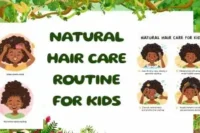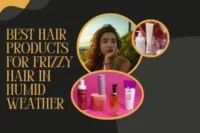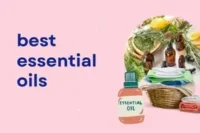Argan Oil for Bleached Hair- Miracle Fix or Major Mistake? (Stylist Tips You NEED to Know)
Published: 10 Apr 2025
Argan oil for bleached hair sounds almost too good to be true, but it works like magic. This golden oil might be your new best friend if your bleached strands feel dry, damaged, or brittle. It’s rich in vitamin E and fatty acids that help restore shine, strength, and softness without making your hair greasy.

In this guide, we’ll uncover why stylists trust argan oil and how to use it safely on processed hair.
Why Argan Oil Works Magic on Processed Hair
This article explains how argan oil for bleached hair helps repair hair dryness, reduce damage, and restore shine, perfect for ages 15 and up, especially those who use color, heat, or chemical treatments.
Key Nutrients That Heal Hair
- Vitamin E Repairs damage and adds softness
- Omega Fatty Acids (6 & 9): Lock in moisture and reduce breakage
- Antioxidants & Polyphenols: Protect hair from the sun and pollution
Unlike heavier oils, argan oil sinks into your hair fast, with no sticky feeling. It’s safe for bleached or color-treated hair.
5 Powerful Benefits of Argan Oil for Bleached Hair
Argan oil deeply nourishes bleached hair, making it softer and shinier. It helps repair damage caused by harsh chemicals and heat styling. The oil seals moisture into dry, brittle strands to reduce breakage.

Its antioxidants protect hair from further environmental damage. With regular use, argan oil can restore strength and smoothness to bleached hair.
1. Deep Moisture Without Buildup
Bleached hair loses its natural oils. Argan oil refills the moisture tank fast. Just a few drops smooth out dryness and soften rough ends.
2. Fewer Split Ends and Less Breakage
Bleaching weakens your hair. Argan oil strengthens it from the inside out. Regular use cuts split ends by almost half!
3. Shine Boost That Lasts
If your hair looks dull, argan oil fixes it. It smooths the cuticle and brings back that healthy glow.
4. Heat Styling Protection
Before blow-drying or flat-ironing, use a little argan oil. It shields your strands from damage, up to 350°F!
5. Frizz Control Made Easy
Humidity? No problem. Argan oil keeps flyaways flat and gives hair a sleek finish.
How to Use Argan Oil on Bleached Hair (Step-by-Step)
How to Use Argan Oil on Bleached Hair – A Simple Step-by-Step Guide.
Leave-In Treatment
- Use 1–2 drops on damp or dry hair
- Focus on ends and mid-lengths
Deep Conditioning Mask
- Mix 1 tbsp of argan oil with 1 tbsp of Greek yogurt
- Apply for 30 minutes, then rinse
Heat Protectant
- Use before styling tools
- Apply to damaged areas only
Overnight Repair
- Massage into ends
- Cover with a silk bonnet or scarf
Pro Tip: Bleached hair absorbs oil faster, so always start with less.
Possible Issues and Simple Fixes
Common hair and scalp troubles don’t have to be stressful. With the right tips, you can solve them quickly and keep your hair healthy.
1. Allergic Reactions
- Do a patch test first (wait 24 hours)
- Stop use if skin reacts
2. Product Buildup
- Use a clarifying shampoo weekly
- Alternate with lighter oils if needed
3. Greasy Feel
- Apply to damp hair only
- Avoid roots if hair is oily
Best Argan Oil Products for Bleached Hair
Bleached hair needs extra love, and argan oil products are perfect for that. They deeply moisturize dry strands and help repair damage caused by chemicals. Look for products with pure argan oil and no harsh ingredients.

Leave-in oils, masks, and serums work best for shine and strength. These products keep your bleached hair soft, smooth, and healthy-looking.
Top Picks (Stylist-Approved)
- Moroccanoil Treatment – Deep moisture and shine
- Josie Maran 100% Pure Argan Oil – Pure, clean, and organic
Budget-Friendly Options
- OGX Renewing Argan Oil of Morocco – Lightweight and affordable
- SheaMoisture 100% Pure Argan Oil – Great for dry ends
Real Experience from a Hair Specialist
After bleaching my hair platinum, argan oil saved me. I use MoroccanOil Treatment twice a week. It keeps my ends soft, and OGX is perfect for touch-ups.”Lisa Chen, Hair Care Specialist
Final Thoughts: Is Argan Oil Worth It for Bleached Hair?
Argan oil for bleached hair is worth every drop. Just be consistent and use it the right way. For best results:
- Choose cold-pressed, pure argan oil
- Apply 2–3 times a week
- Pair with protein hair masks for deeper repair
FAQs – Argan Oil for Bleached Hair
Argan oil can make hair greasy only if you use too much at once. Just 1–2 drops are sufficient to smooth and soften your strands. Focus application on the mid-lengths and ends, avoiding the roots to prevent oil buildup. This ensures your bleached hair stays light, soft, and manageable without looking weighed down. Using too much can make fine or fragile hair appear flat, so always start small and add more if needed.
Argan oil cannot completely reverse bleach damage, but it significantly improves hair health. It restores softness, shine, and elasticity while reducing breakage and frizz. Pairing argan oil with protein treatments or hydrating masks helps rebuild strength and repair strands over time. Consistent use gradually makes bleached hair look healthier and more resilient. Think of it as a nourishing support system rather than a full cure.
It’s best to wait at least 48 hours after bleaching before applying argan oil. This gives your hair time to recover and allows the cuticles to close slightly. Once the hair is stable, argan oil can hydrate, smooth, and protect it from further dryness. Applying oil immediately after bleaching may not be as effective because the hair is extremely porous and may absorb it unevenly. Patience ensures maximum benefits without overloading delicate strands.
Yes! Argan oil is lighter, non-greasy, and absorbs quickly, making it ideal for fragile, bleached hair. Coconut oil, while nourishing, can sometimes weigh down delicate strands or leave a heavy residue. Argan oil provides moisture and shine without affecting volume, making it safer for daily use. Its antioxidants and vitamin E content also help strengthen hair and protect it from environmental stressors.
No, pure argan oil will not alter your hair color. Instead, it enhances shine and makes your bleached or colored hair appear richer and healthier. It helps maintain the vibrancy of color-treated hair while preventing dullness. Using it regularly can improve the overall appearance of your hair without interfering with your dye or bleach results.
Yes, you can leave a small amount of argan oil in your hair overnight, especially on the ends. Covering your hair with a silk scarf or bonnet prevents staining your pillow and keeps the oil from rubbing off. Overnight application allows the oil to deeply penetrate the hair shaft, resulting in softer, smoother, and more manageable strands in the morning. Avoid applying too much to prevent heaviness.
For bleached hair, applying argan oil 2–3 times per week is ideal. This keeps hair nourished without causing buildup or making it appear limp. Overuse can leave hair oily or flat, especially for fine textures. Combining argan oil with other moisturizing or protein treatments on alternate days can provide balanced care. Consistency, rather than daily use, gives the best results.
Absolutely! Argan oil acts as a natural heat protectant. Apply a small amount to damp or dry hair before using blow dryers, straighteners, or curling irons. It helps reduce heat-induced breakage and dryness while smoothing the hair surface. While it doesn’t replace specialized heat protectant sprays, it adds an extra layer of protection and hydration.
Allergic reactions to argan oil are rare but possible, particularly for people with nut allergies. It’s recommended to perform a patch test on your wrist before first use. Apply a small amount and wait 24 hours to see if any irritation occurs. If you experience redness, itching, or swelling, discontinue use and consult a doctor before trying again.
Argan oil locks in moisture but does not add moisture on its own. If your hair is extremely dry or damaged, it’s important to use a deep conditioner or hydrating treatment first. Afterward, applying argan oil seals in the hydration and prevents moisture loss. Think of it as a finishing step that enhances softness and shine rather than a standalone solution for severe dryness.

- Be Respectful
- Stay Relevant
- Stay Positive
- True Feedback
- Encourage Discussion
- Avoid Spamming
- No Fake News
- Don't Copy-Paste
- No Personal Attacks

- Be Respectful
- Stay Relevant
- Stay Positive
- True Feedback
- Encourage Discussion
- Avoid Spamming
- No Fake News
- Don't Copy-Paste
- No Personal Attacks





